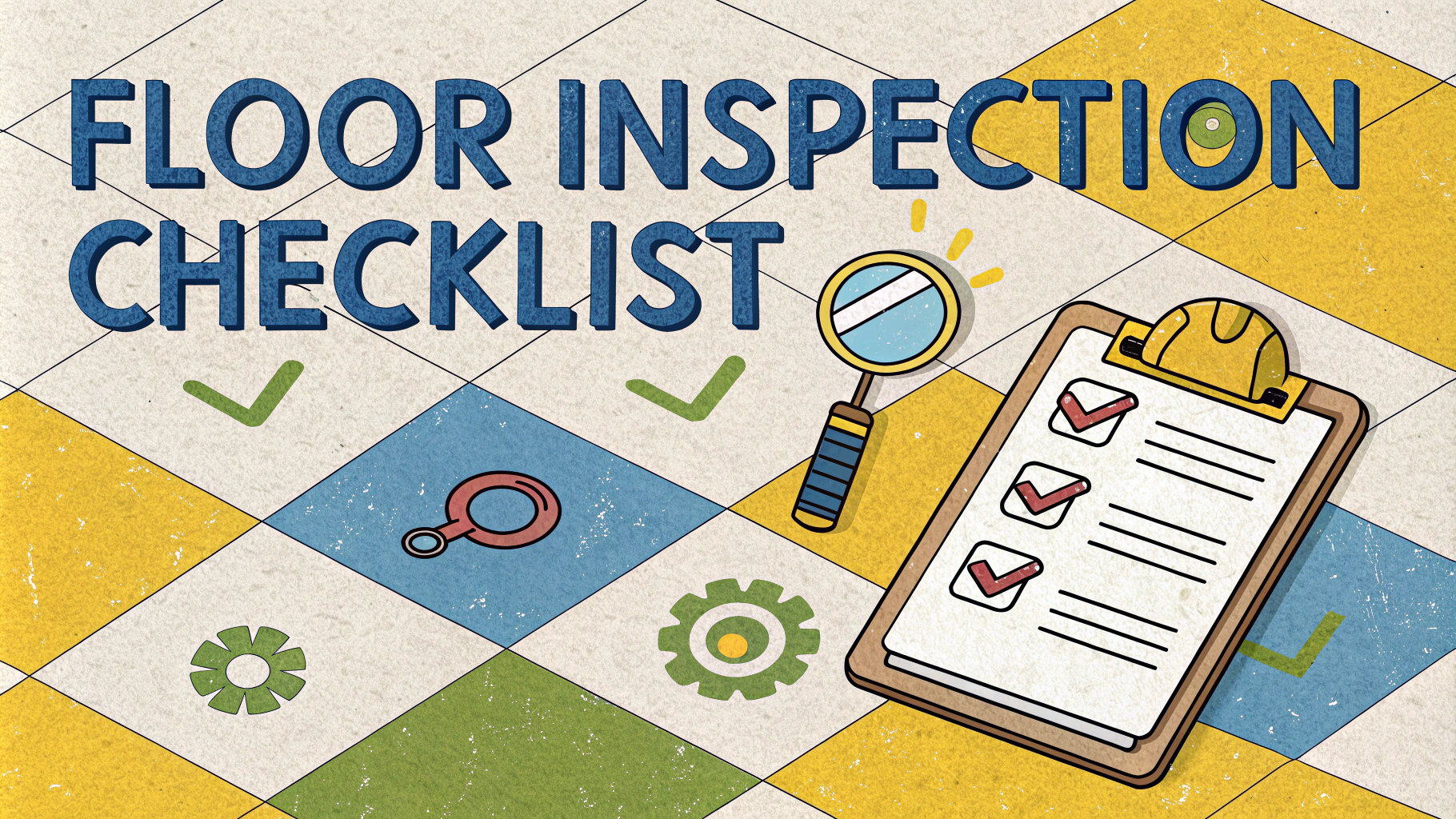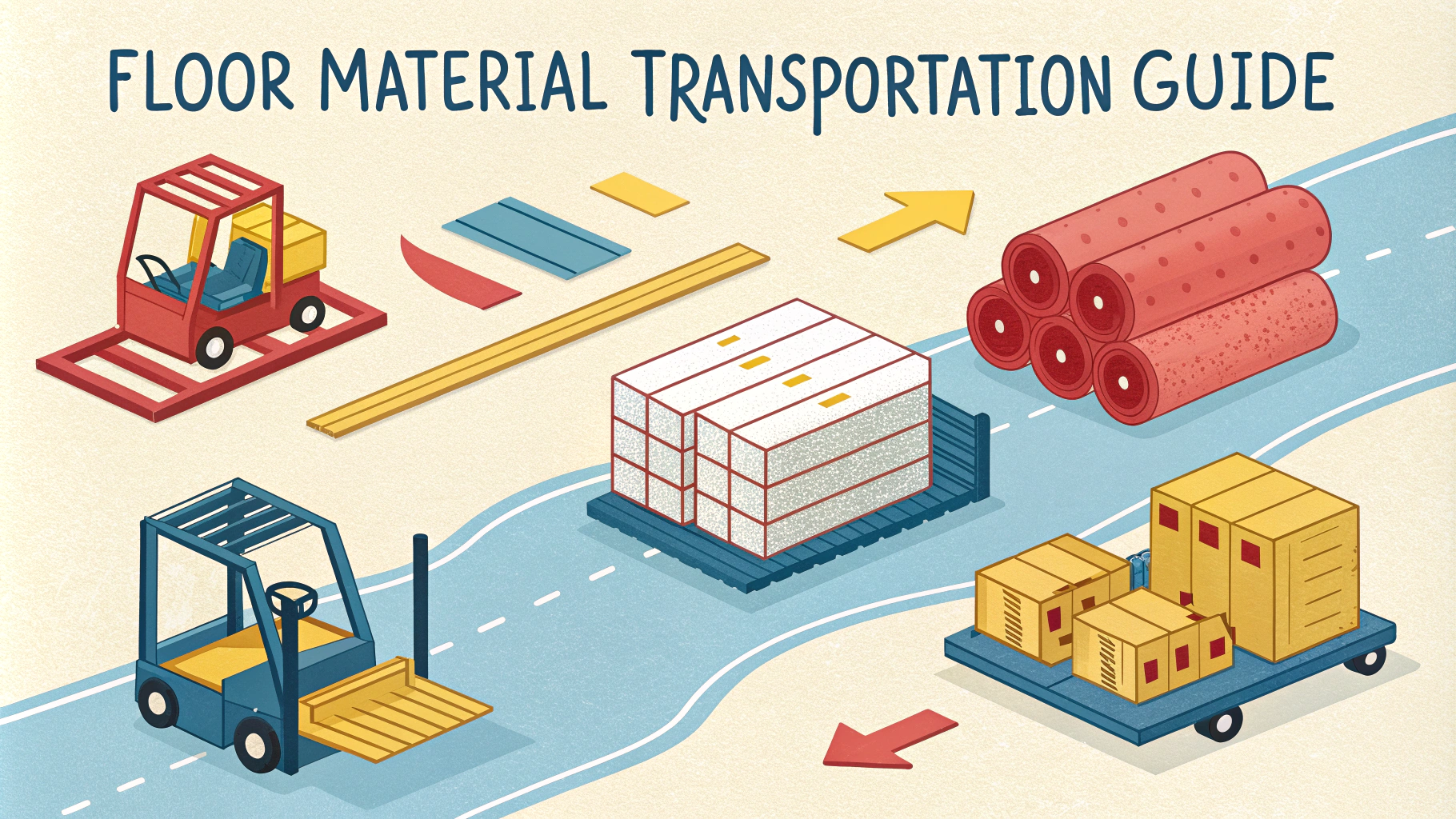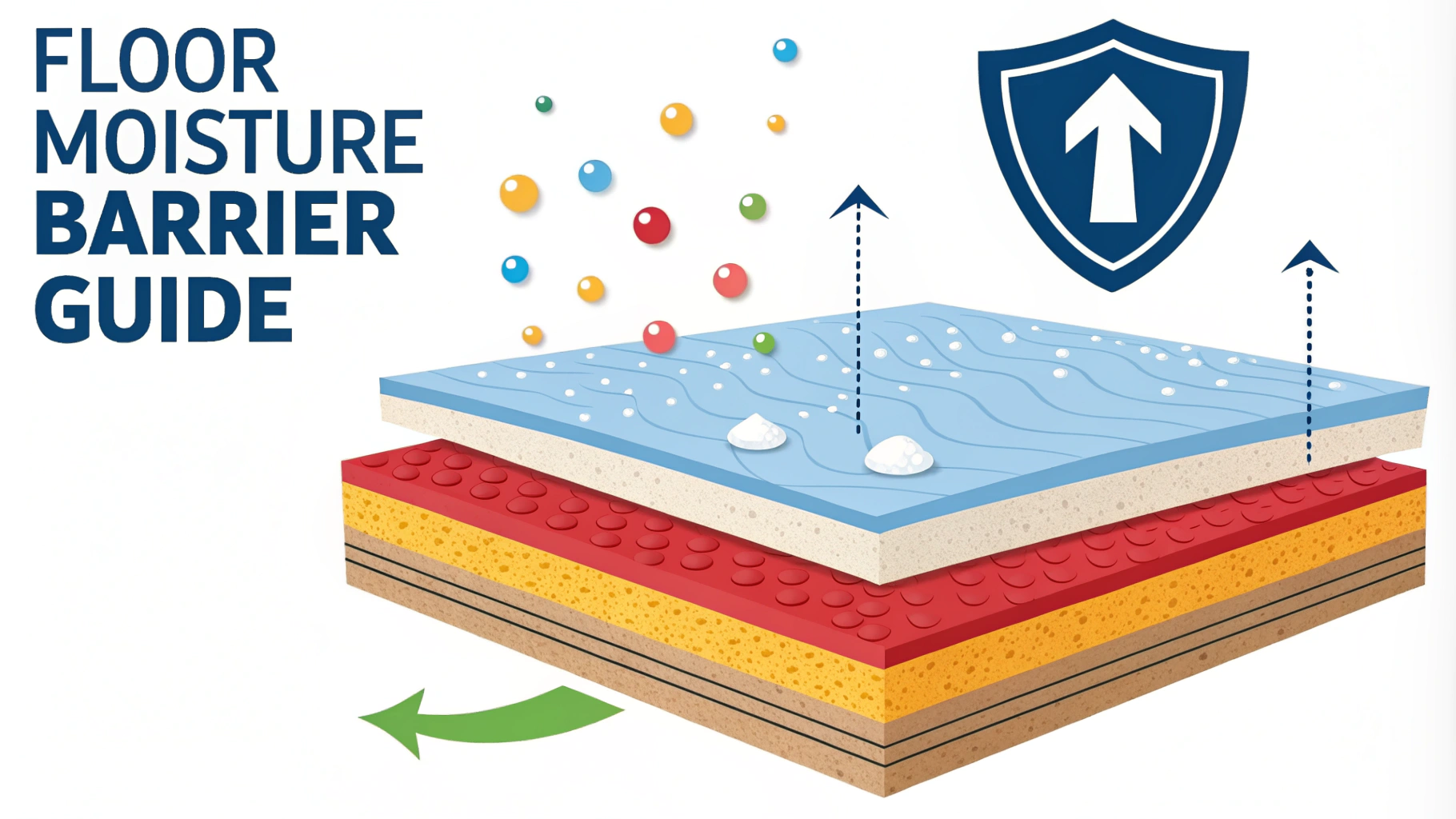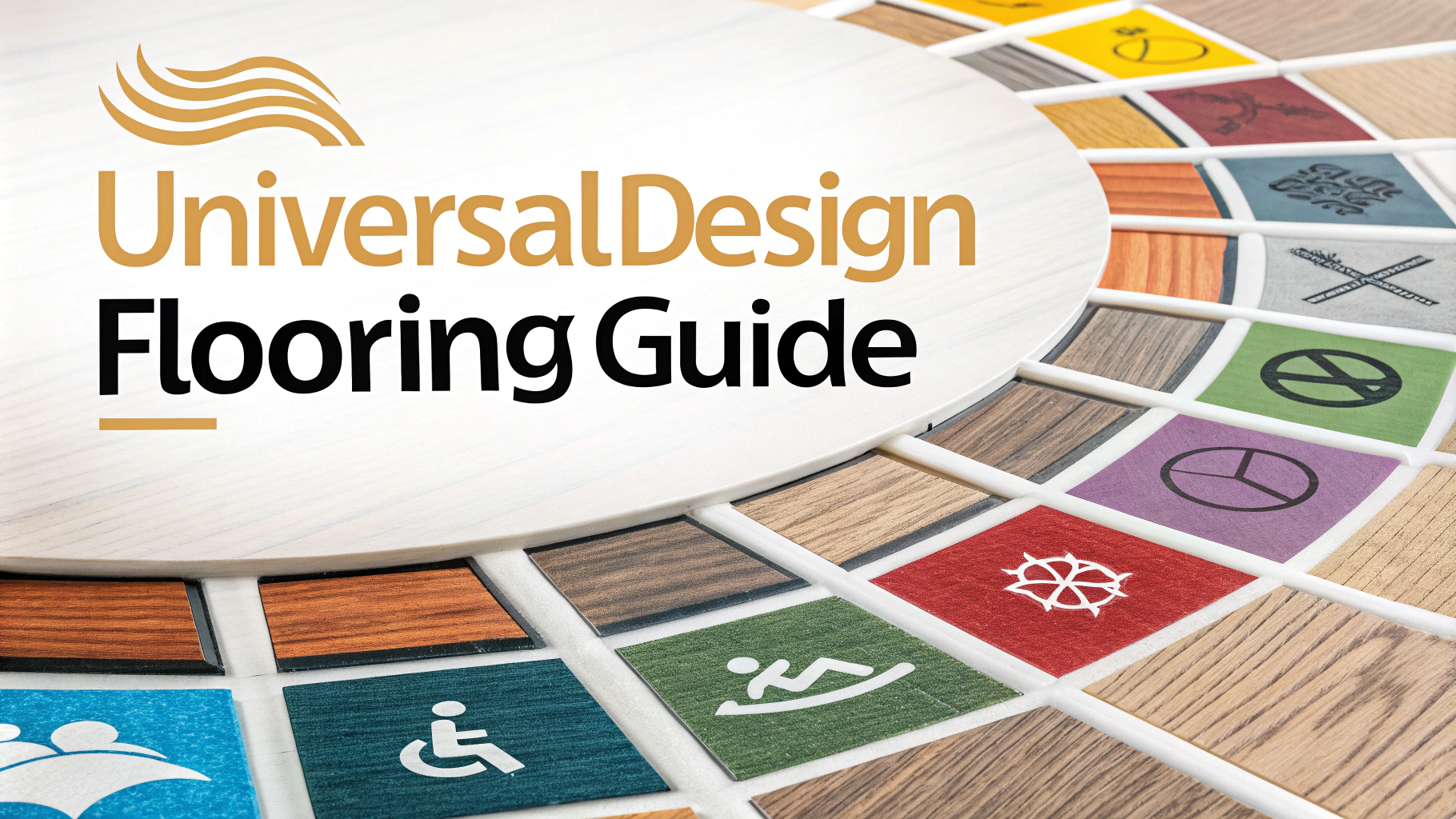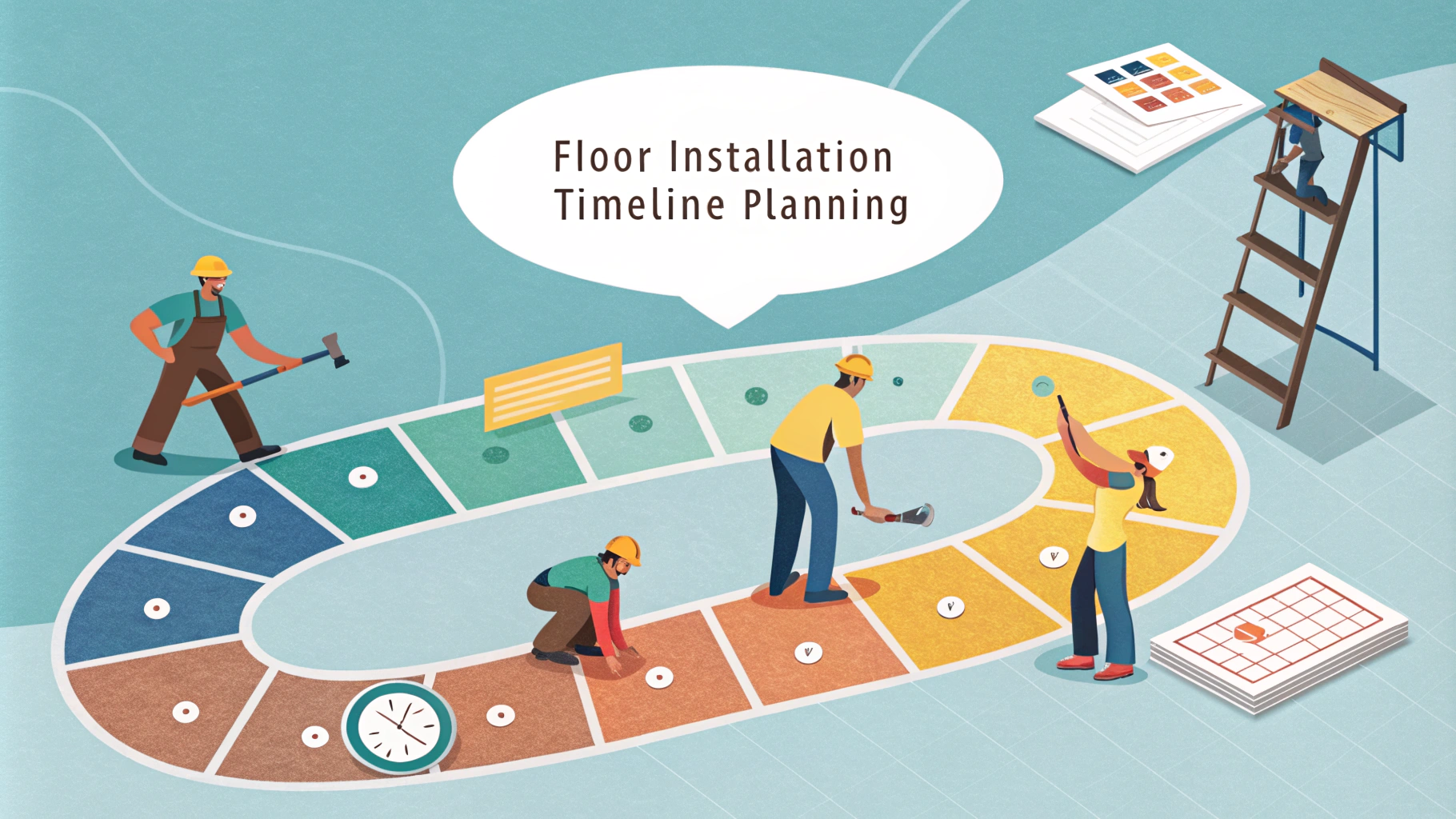Floor installation transforms the look and functionality of any space while potentially increasing property value.
Proper installation techniques, material selection, and preparation work are essential elements for a successful flooring project that stands the test of time.
This guide covers the fundamentals of floor installation across different materials, helping both DIY enthusiasts and those planning to hire professionals make informed decisions.
Pre-Installation Planning
Measure your room’s square footage accurately by multiplying length by width and adding 10% extra for waste and mistakes.
- Remove existing flooring and baseboards
- Check subfloor condition for damage
- Test moisture levels (should be below 12%)
- Ensure the surface is clean and level
Common Flooring Types and Installation Methods
| Flooring Type | Installation Method | Difficulty Level |
|---|---|---|
| Hardwood | Nail-down, glue-down, floating | Advanced |
| Laminate | Floating click-lock | Beginner |
| Tile | Mortar and grout | Intermediate |
| Vinyl | Peel-and-stick, floating, glue-down | Beginner |
Tools and Materials Needed
- Basic Tools: Tape measure, pencil, utility knife, level
- Power Tools: Circular saw, jigsaw (for cutting around corners)
- Safety Equipment: Knee pads, safety glasses, work gloves
- Material-Specific Tools: Trowel (tile), nail gun (hardwood), spacers
Step-by-Step Installation Process
- Acclimate flooring materials for 48-72 hours in installation space
- Prepare subfloor (repair, clean, level)
- Install underlayment if required
- Begin installation from the longest straight wall
- Maintain proper expansion gaps
- Cut end pieces as needed
- Install trim and moldings
Professional Help and Resources
Contact the National Wood Flooring Association (NWFA) at 800-422-4556 for certified installer recommendations.
The Tile Council of North America (TCNA) provides technical support at 864-646-8453 for tile-specific installations.
Maintenance Tips for New Floors
- Wait 24 hours before walking on newly installed floors
- Clean with manufacturer-recommended products only
- Use furniture pads to prevent scratches
- Maintain proper indoor humidity levels (35-55%)
Next Steps for Your Flooring Project
Consider scheduling a professional inspection of your subfloor before starting the installation process.
Review manufacturer warranties and installation guidelines for specific requirements that might affect your installation approach.
Cost Considerations
Material Costs
- Hardwood: $8-15 per square foot
- Laminate: $2-8 per square foot
- Tile: $5-10 per square foot
- Vinyl: $2-7 per square foot
Installation Costs
- Professional installation: $4-8 per square foot
- Additional costs for subfloor repairs
- Removal of existing flooring: $1-2 per square foot
Troubleshooting Common Installation Issues
- Buckling or warping: Check moisture levels and expansion gaps
- Uneven seams: Ensure proper subfloor preparation
- Hollow sounds: Address underlayment issues
- Gaps between boards: Verify proper acclimation
Environmental Considerations
- Choose sustainable materials when possible
- Consider VOC emissions from adhesives
- Properly dispose of old flooring materials
- Look for recycled content options
Ensuring Long-Term Success
Document your installation process and keep spare materials for future repairs. Register product warranties and maintain detailed care records for warranty compliance. Schedule regular professional inspections to catch potential issues early.
Follow manufacturer guidelines strictly and invest in quality materials and tools for optimal results. A well-executed floor installation will provide years of beautiful, functional service while protecting your investment.
FAQs
1. What are the essential tools needed for floor installation?
Level, measuring tape, moisture meter, underlayment, spacers, saw (circular or table), tapping block, pull bar, hammer, and safety equipment (goggles, knee pads, gloves).
2. How long should flooring acclimate before installation?
Hardwood and laminate flooring should acclimate for 48-72 hours in the installation room to adjust to temperature and humidity conditions.
3. What’s the proper way to prepare a subfloor before installation?
Clean thoroughly, repair any damage, ensure it’s completely level, conduct moisture testing, and install appropriate underlayment if required.
4. How do I deal with moisture issues in my subfloor?
Use a moisture barrier, install proper ventilation, fix any water leaks, and ensure moisture readings are within manufacturer specifications before installation.
5. What’s the recommended expansion gap for flooring installation?
Generally, leave 1/4 to 3/8 inch gap around the perimeter for most flooring types to allow for natural expansion and contraction.
6. Should flooring be installed parallel or perpendicular to joists?
For optimal stability, install flooring perpendicular to floor joists. If installing over an existing floor, install perpendicular to the previous flooring direction.
7. How do I calculate the amount of flooring needed for my project?
Measure room length x width in square feet, then add 10-15% extra for cuts, waste, and potential future repairs.
8. What are the signs of an improperly installed floor?
Gaps between boards, buckling, squeaking, uneven surfaces, lifting edges, and hollow sounds when walking indicate installation problems.
9. How often should different types of flooring be replaced?
Carpet typically lasts 5-10 years, laminate 15-25 years, hardwood 30-100+ years with proper maintenance and refinishing.
10. What’s the best way to transition between different types of flooring?
Use appropriate transition strips designed for specific flooring combinations, ensuring proper height alignment and secure installation.
11. Can floor installation be done over radiant heating systems?
Yes, but select flooring materials rated for radiant heat use and follow manufacturer guidelines for maximum temperature settings.

